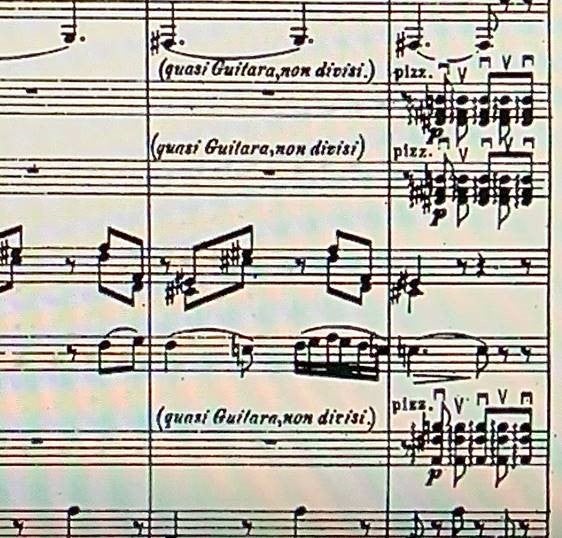Spanish Dance’ Influence on Falla & Rimsky-Korsakov
As instrumentation and style in orchestral music grew exponentially over the course of the 19th century, dance music remained a favorite classic element among composers. This style both honored their history and heritage.
While musical character and specific groupings of instruments can provide the rhythms needed for a dance, it is a nation’s culture that can create a brand new musical style and maybe even a whole new instrument.
Let’s look first at Spanish composer Manuel de Falla’s towering orchestral score The Three-Cornered Hat. Keeping in mind the obvious fact that this whole piece is set to dance—as it is a ballet—listen to the heavier harmonic texture that is typical of a Spanish guitar style reinterpreted into a fluid dancing style:
It’s hard to tell which dominates—the chills from luscious harmony or the desire to dance!
A couple of decades earlier, in distant Russia, Nikolai Rimsky-Korsakov composed an orchestral suite that was masterfully infused with Spanish folk songs and dance styles. Recognized today as one of the greatest orchestrators of all time, Rimsky-Korsakov had a very specific method of orchestrating that was strict and foolproof. This only worked in his favor when he stepped outside of his comfort zone to compose in a foreign Spanish folk-style. In the second half of his Capriccio espagnol, there is a moment when most of the strings start strumming their instruments in the style of a Spanish guitar. Rimsky-Korsakov even marks it “quasi Guitara” meaning “like a guitar.” Below is a picture of that moment in the score:

What follows this part is that most famous evocative Spanish melody, in full force. Watch it!
Lastly, how could we forget the castanets?
Although this unique percussion instrument and its variations are found in many cultures, it is especially a trademark of Spanish music. It is usually held by those who are performing hands-free—such as singers and dancers—allowing them more freedom on stage. Naturally, it makes an appearance in both of these fiery works!
In keeping with his careful orchestration, Rimsky-Korsakov uses the castanets to accent the opening of the last movement of Capriccio espagnol.
Falla also chooses the instrument he is so familiar with to feature prominently towards the end of the first work we looked at, his Suite No. 2 from The Three-Cornered Hat.
Although separated by distance and time, these two composers are united through the instruments and dance of their collective works.
Don’t miss the NJSO perform these two showpieces Nov 7–10!
Post by Michael Rosin
Spanish- and French-Inspired Showpieces
Featuring violinist Ning Feng
XIAN ZHANG conductor
NING FENG violin
-
RIMSKY-KORSAKOV Capriccio espagnol
Inspired by Spanish dance, Russia’s Rimsky-Korsakov turns a brilliant solo spotlight on members of the orchestra.
-
QIGANG CHEN La joie de la souffrance for Violin and Orchestra (US Premiere and NJSO Co-Commission)
“The Joy of Suffering” explores the composer’s view that joy and suffering are “a matter of ‘Yin’ and ‘Yang’, inseparable and hence all things should contain both. Like loss and gain, they are bound to balance out.”
-
SAINT-SAËNS Introduction and Rondo Capriccioso
A soulful start prepares the listener for a heartbreaking piece—then fireworks erupt. The soloist’s left hand blurs on the fingerboard, and the bowings require an elite athlete’s stamina and grace. Only the best violinists like Feng can make this piece sing.
-
FALLA Suite No. 2 from The Three-Cornered Hat
From the ballet stage comes this lighthearted Spanish tale filled with the rhythm and seduction of the dancing it is meant to accompany.
